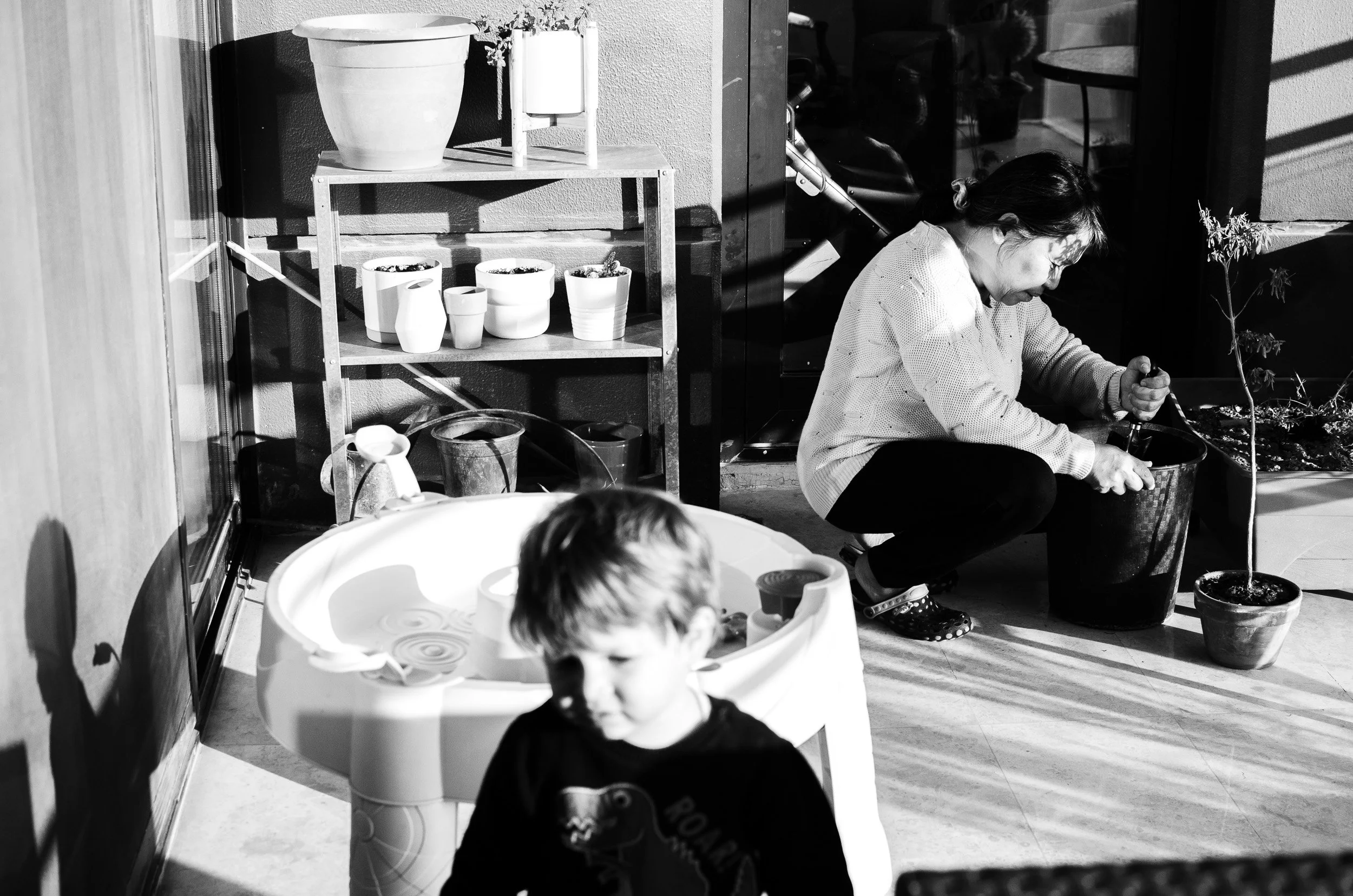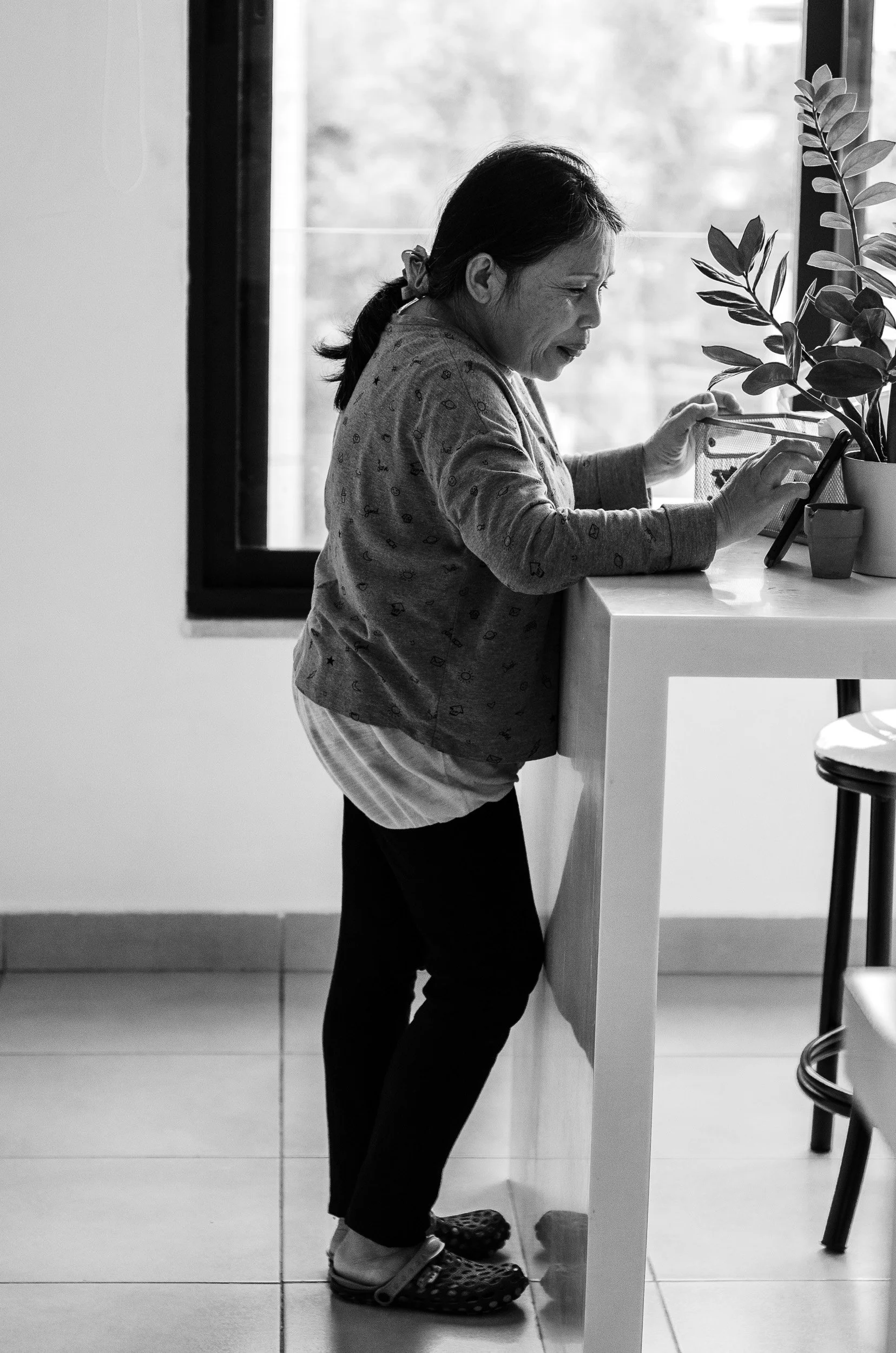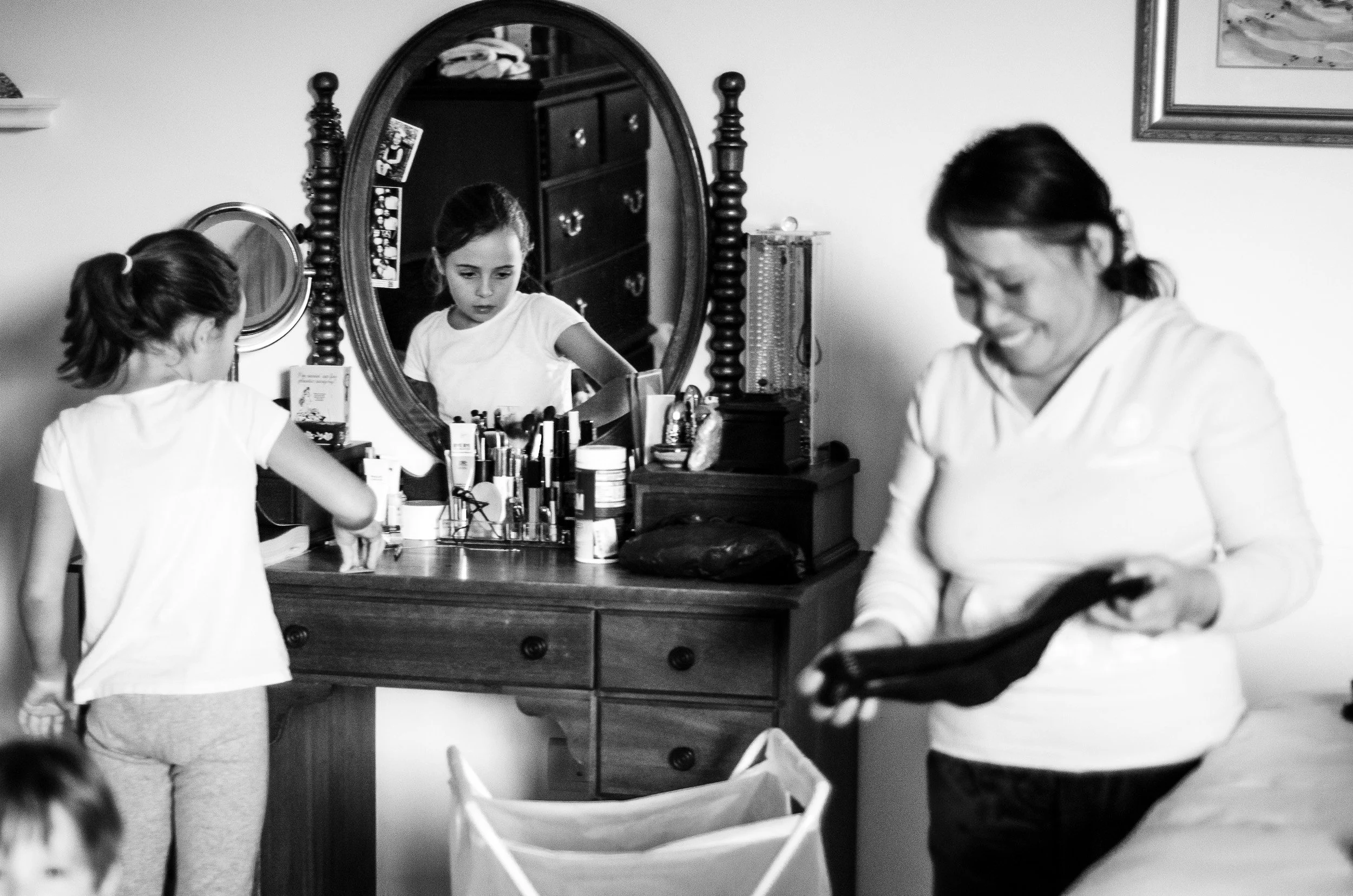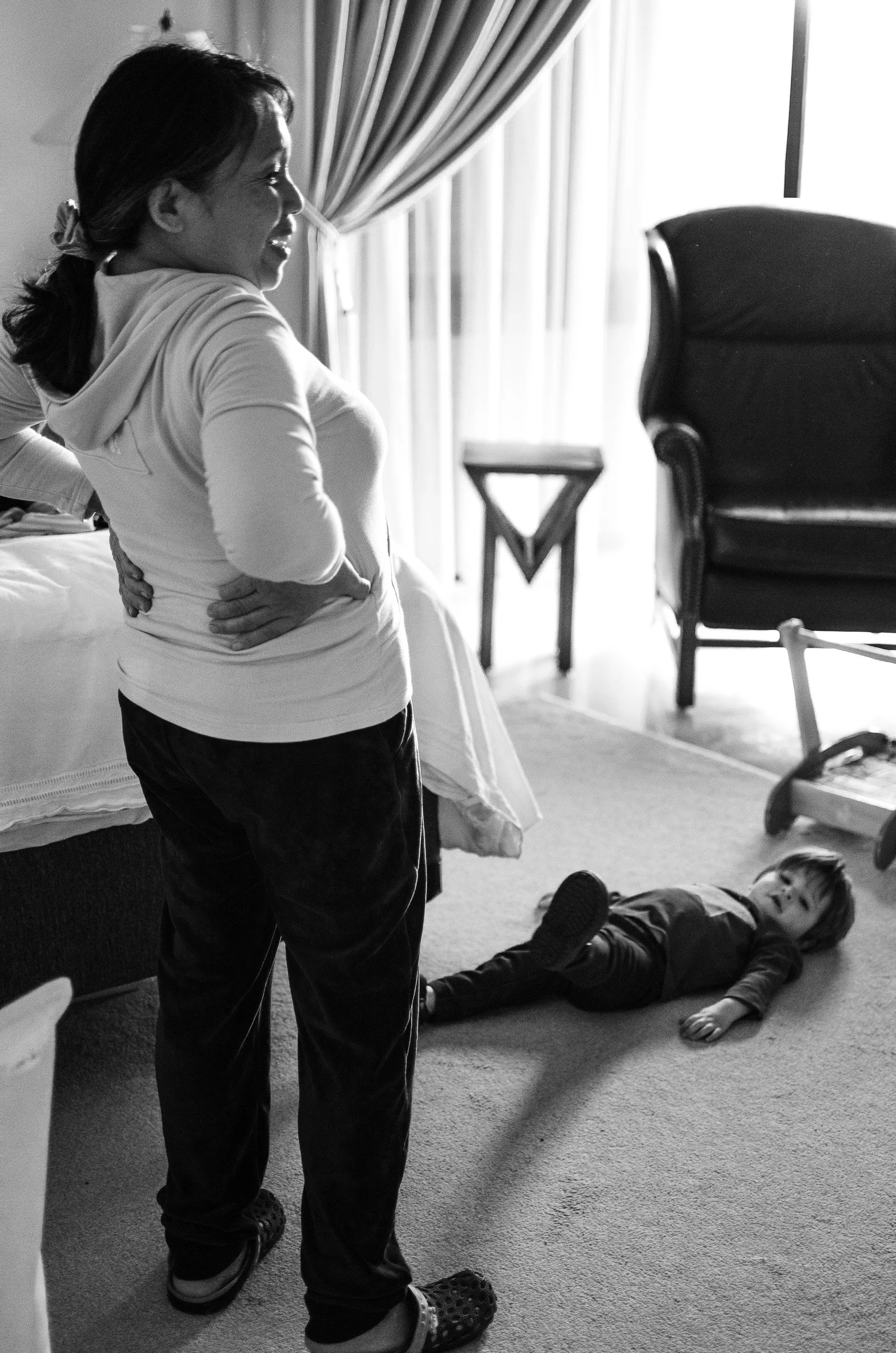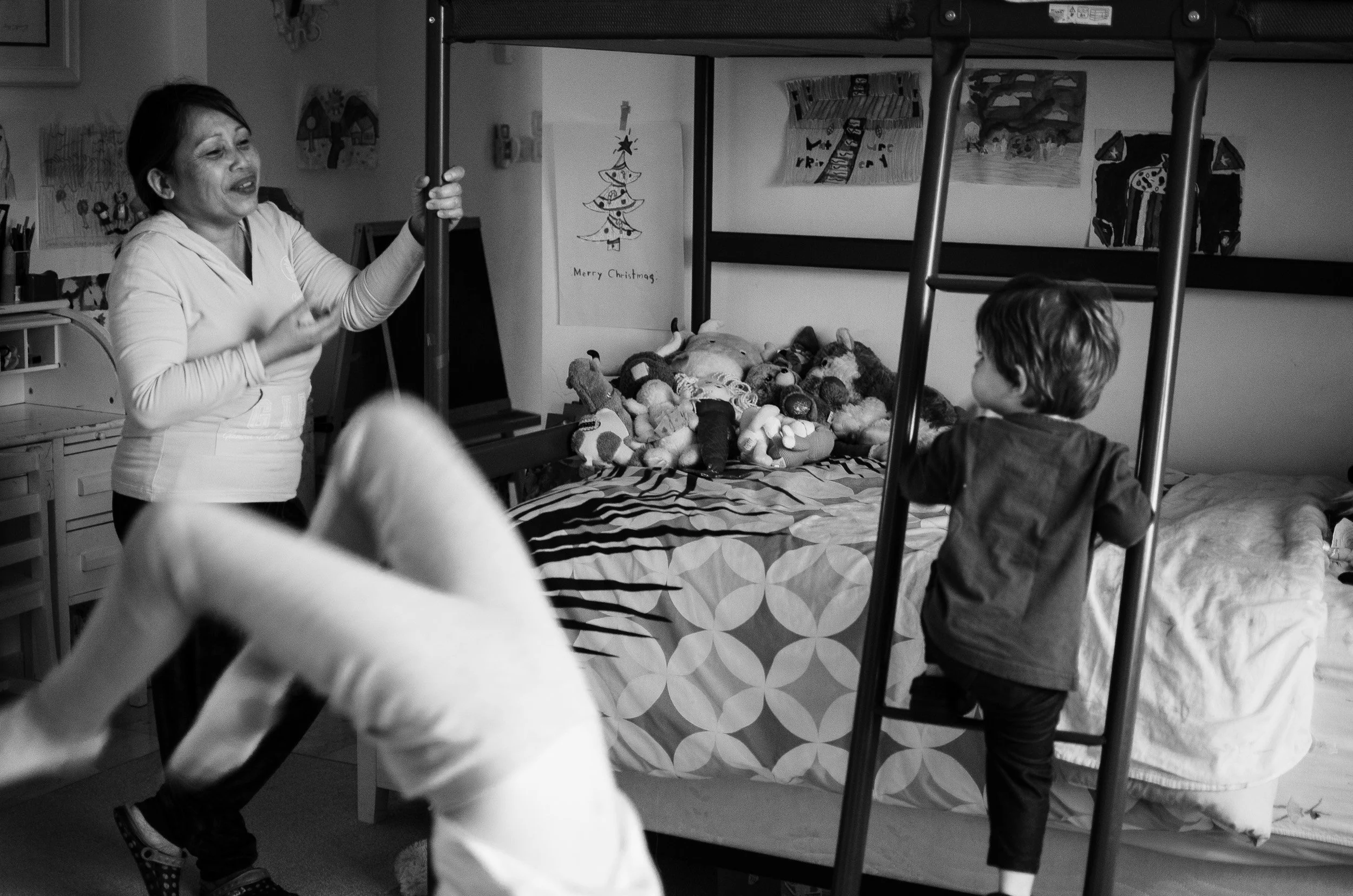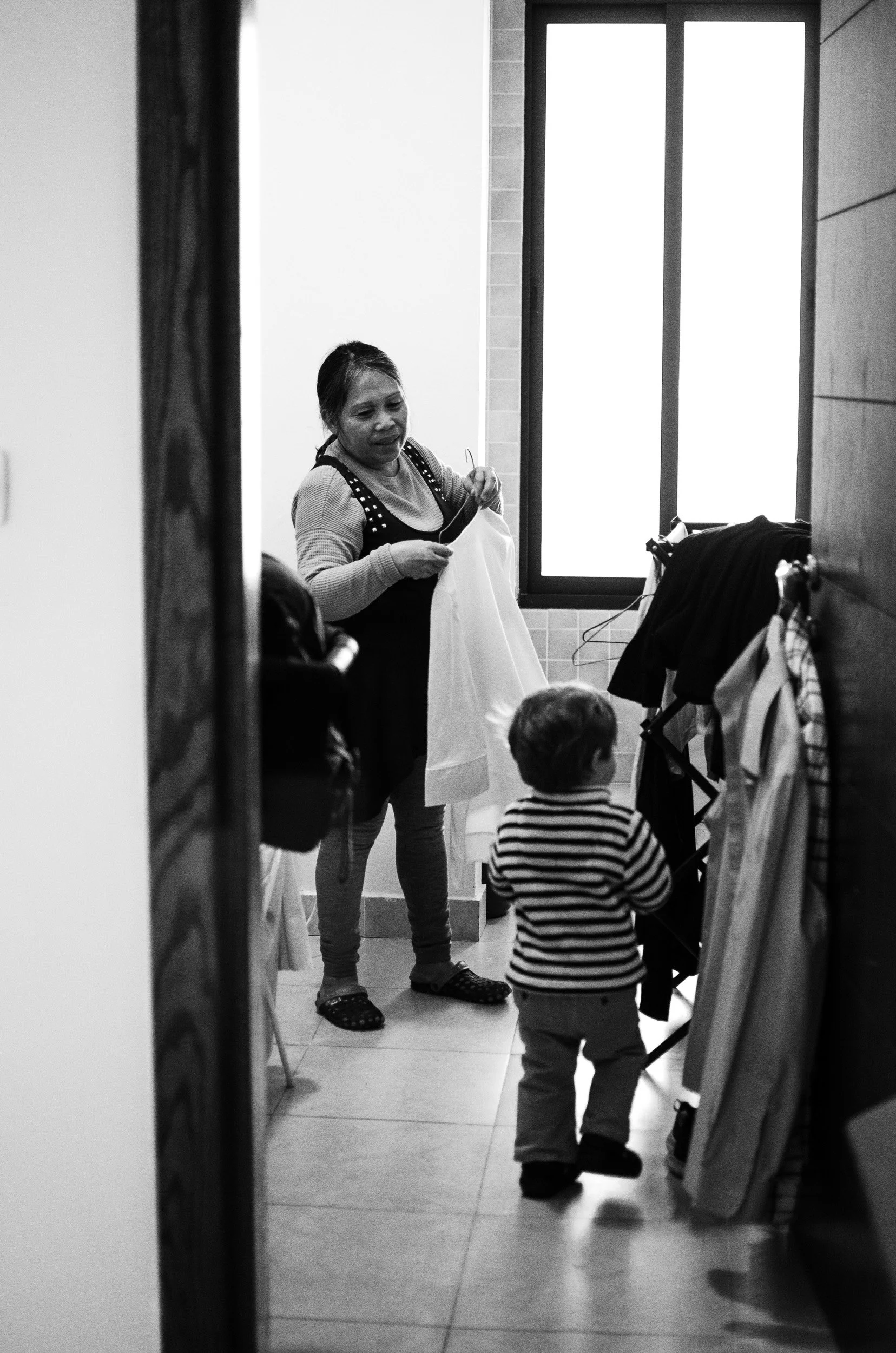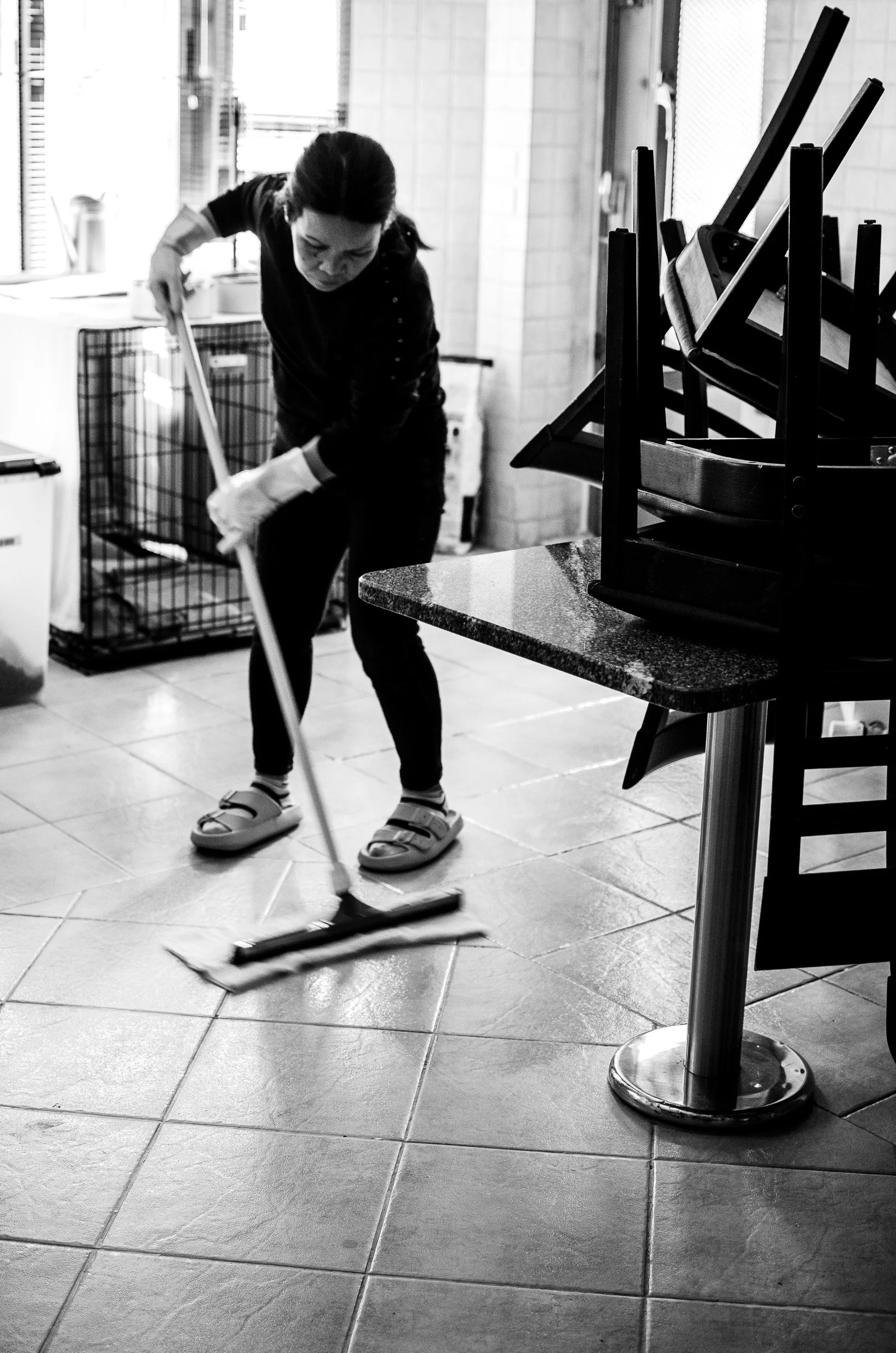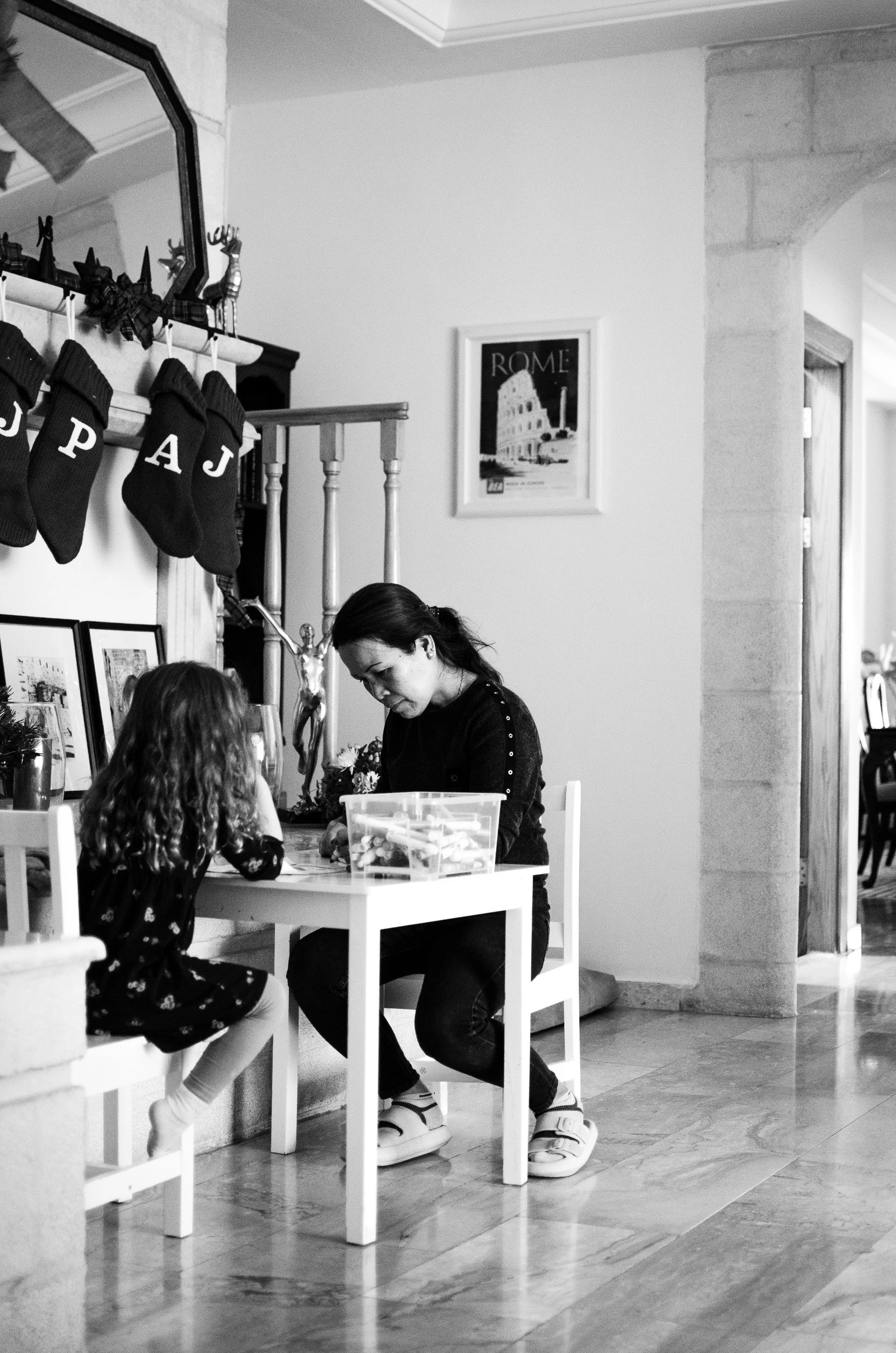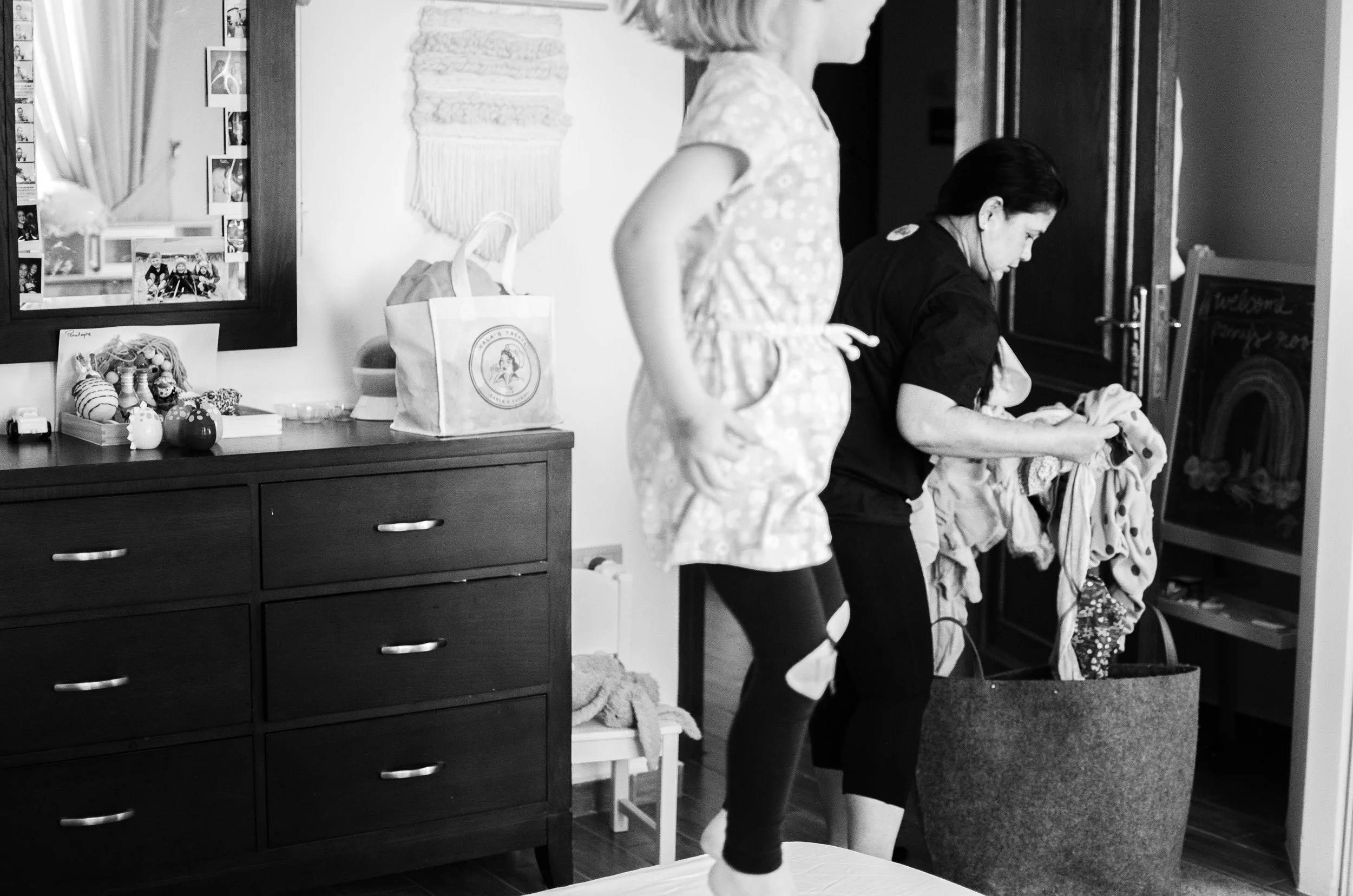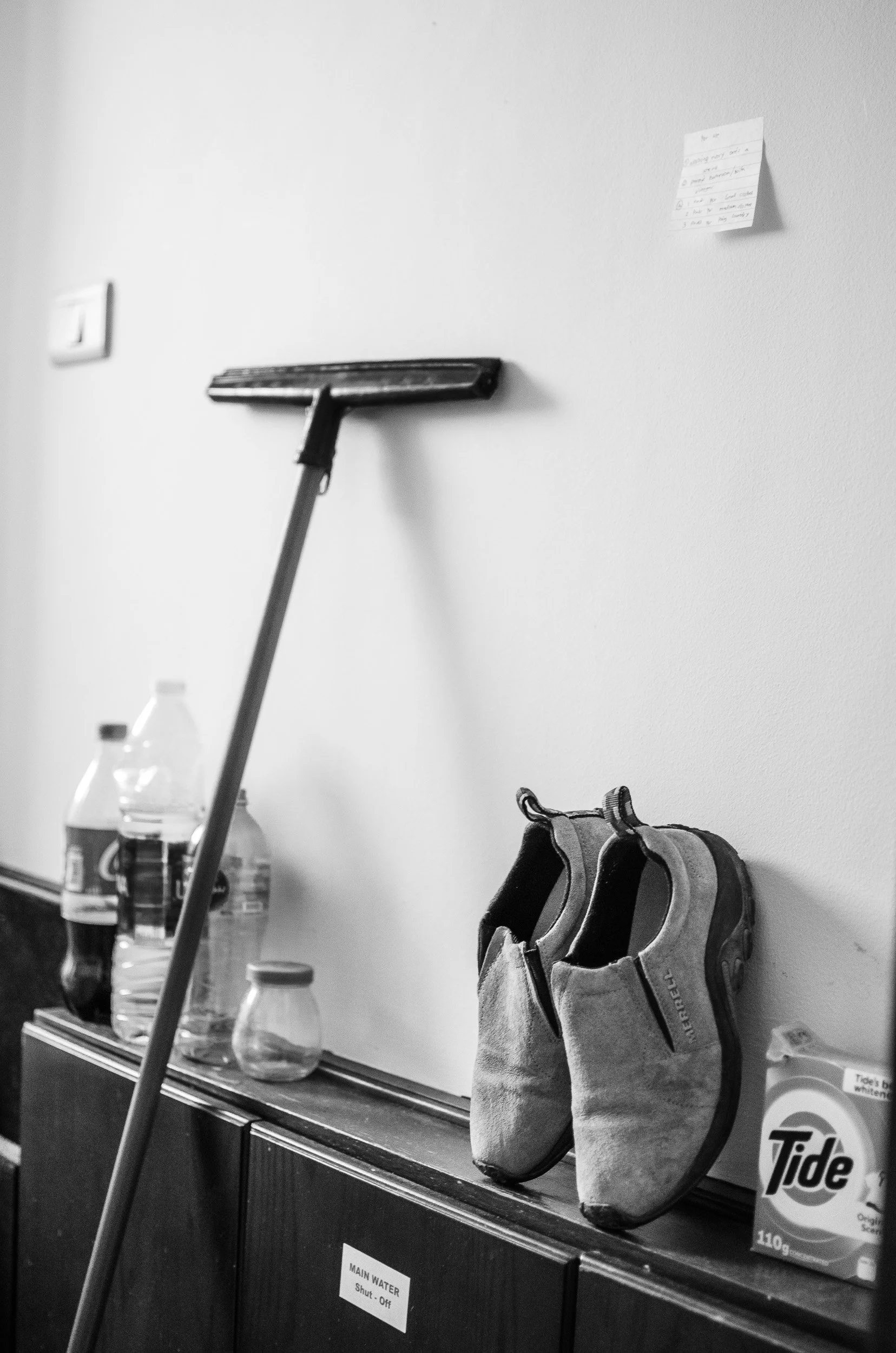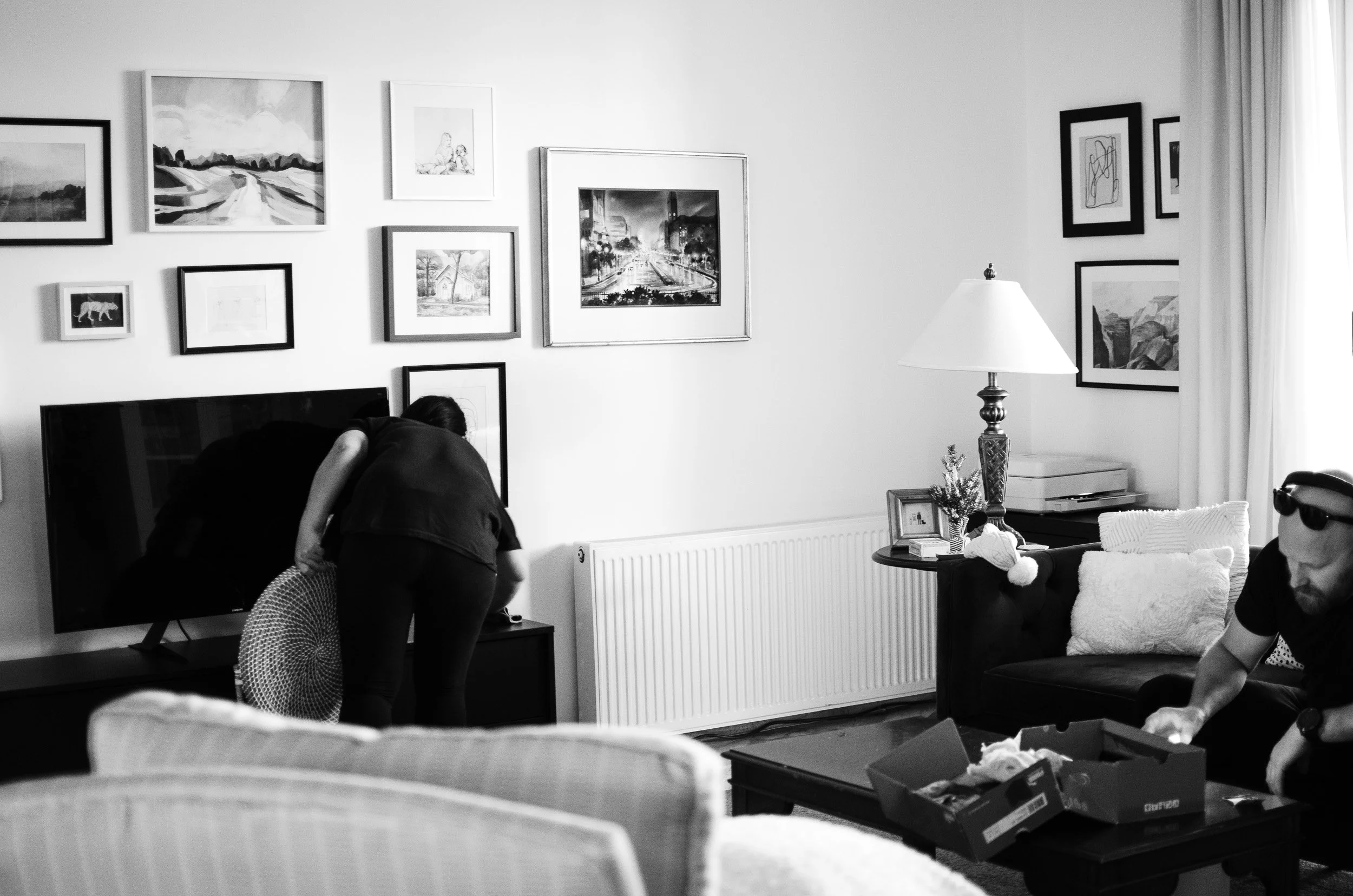Assignment 9
Narrative Project
21 Nov 2022 | Amman | Assignment9_SarahJD_001 | Photo by Sarah Jane Dunaway
1/1000s (f4 ISO 200) - 35 mm lens
Many domestic workers in Jordan and the Middle East are from the Philippines or Sri Lanka and are typically hired to serve as nannies, housekeepers or a combination of both. The majority handle everyday household tasks such as laundry and cleaning. Others also cook and help with childcare. Most permanent residents require their workers to wear uniforms, whereas diplomats and non-permanent residents offer more flexibility.
All domestic workers must be sponsored by a resident—whether it be a permanent resident or a temporary one with diplomatic status or tied to an NGO or other government entity such as the UN. Some work only for their sponsoring family, while others are able to work part-time or on an occasional basis for additional families, based on the needs and flexibility of their sponsor.
Pictured above, Daisy, 58, helps re-pot plants using soil she brought from the personal garden in her apartment. Though not required to garden, she voluntarily helps with these aspects of the home, knowing that her sponsor lacks a green thumb!
Cary, 1, keeps her company on the balcony and regularly follows Daisy around the home as she works.
28 Nov 2022 | Amman | Assignment9_SarahJD_002 | Photo by Sarah Jane Dunaway
1/30s (f2.5 ISO 800) - 35 mm lens
The relationship between domestic workers and sponsor is different for all families, especially among the sponsors who temporarily live in Jordan due to work.
In the case of diplomats, the sponsors often try to pass along their domestic workers to colleagues and fellow diplomats within their respective embassy communities to ensure stability for the domestic worker and help keep the worker’s visa active.
Above, Daisy unpacks the school lunchbox of Cary’s older sister, Mae, 7, and offers Cary leftover snacks as he plays with a truck on the kitchen floor.
29 Nov 2022 | Amman | Assignment9_SarahJD_003 | Photo by Sarah Jane Dunaway
1/500s (f2.8 ISO 800) - 50 mm lens
Not all domestic workers have a positive relationship with their sponsoring family, but due to visa regulations and contractual obligations, both parties may be forced to stay together. Though working for diplomatic sponsors comes with some instability as residency is temporary, it can also be a blessing based on the relationship between both parties.
Above, Daisy folds up a storage bag used to protect her sponsor family’s artificial Christmas tree. Cary tries to help after following her onto the balcony.
29 Nov 2022 | Amman | Assignment9_SarahJD_004 | Photo by Sarah Jane Dunaway
1/250s (f2.8 ISO 800) - 50 mm lens
Daisy, who has lived in Amman for almost 20 years, previously worked for a fellow American diplomatic family with two older children who rarely needed assistance or supervision. The majority of her time was confined to cleaning, cooking and weekly grocery shopping.
Pictured above, Daisy watches a YouTube video on her phone as she searches for dinner recipes, which she helps prepare no more than twice per week. Newly repotted plants are used to prop up her phone, which sit next to a pile of cellophane grocery bags she folds into tiny triangles for storage.
30 Nov 2022 | Amman | Assignment9_SarahJD_005 | Photo by Sarah Jane Dunaway
1/60s (f1.8 ISO 800) - 50 mm lens
Some domestic workers have been a part of their sponsoring families long before children were added to the families, especially in the case of permanent residents.
Daisy has been with her sponsoring family since before Cary was born and has a much closer relationship with him than that of his sister Mae who was 5 years old when Daisy was hired.
Daisy has two adult sons of her own who reside in the Philippines, and she became a grandmother for the first time around the same time Cary was born.
Above, the children follow Daisy into their parents’ bedroom where Daisy folds laundry and enjoys their company as she takes care of household chores.
30 Nov 2022 | Amman | Assignment9_SarahJD_006 | Photo by Sarah Jane Dunaway
1/60s (f1.8 ISO 800) - 35 mm lens
Sponsoring families are often obligated by contract to send their domestic workers home at least once per year, though many do not follow through—especially during COVID when the Philippines was closed to air travel.
Daisy’s current sponsor paid for her flight home in June 2022 to meet her new grandchild, as well as attend a family wedding. It had been five years since she had been home.
Daisy takes a break from folding laundry to laugh with Cary who rolls on the floor, taunting her for tickles.
30 Nov 2022 | Amman | Assignment9_SarahJD_007 | Photo by Sarah Jane Dunaway
1/40s (f1.8 ISO 800) - 35 mm lens
Daisy watches Mae do handstands and negotiates with Cary as he attempts to climb up the bunk bed ladder in Mae’s bedroom.
Daisy often treats the children as if they were her own, regularly helps discipline the children, and reminds them to do various age-appropriate chores.
1 Dec 2022 | Amman | Assignment9_SarahJD_008 | Photo by Sarah Jane Dunaway
1/100s (f2.0 ISO 800) - 35 mm lens
Daisy irons and talks to Cary who has followed her into a small room next to the kitchen used to store household items and an ironing board. Though Daisy is not a live-in nanny, these rooms are often reserved for domestic workers and especially those who live permanently in their sponsoring family’s home. They are designed to be just big enough to fit a small twin bed and include a full bath.
Though the room in this house contains household items, it is still considered Daisy’s room and serves as an occasional respite where she stores her purse and various belongings such as house shoes and hair clips.
Customarily, this room contains the only toilet and restroom the domestic workers will use in their sponsor’s home—whether because they are instructed to do so, or simply out of habit or cultural tradition.
1 Dec 2022 | Amman | Assignment9_SarahJD_009 | Photo by Sarah Jane Dunaway
1/80s (f2.5 ISO 500) - 35 mm lens
Some domestic workers prefer to maintain a more distant and reserved relationship, whereas others truly become integrated into their sponsor’s family.
Above, Annabelle, 48, mops a kitchen floor, which is a task she prefers over most other chores in the home where she works. She has a quiet demeanor and prefers to work in unoccupied areas of the home.
Though Annabelle is full-time with her sponsoring family, it is financial obligations that force the family to keep Annabelle’s visa active, even though she has little interest in interacting with the sponsor’s children or helping with childcare, despite this being a primary factor for which she was hired.
1 Dec 2022 | Amman | Assignment9_SarahJD_010 | Photo by Sarah Jane Dunaway
1/60s (f1.8 ISO 800) - 35 mm lens
Annabelle sits with Aurelia, 4, as they color next to one another.
In an effort to maintain consistency for domestic workers, many diplomatic families find themselves contractually obligated to serve as sponsors even when the relationship is not working. Their status as a diplomat and freedom within the host country often provides a sense of moral obligation, regardless of whether the individual they sponsor is right for their family.
Annabelle, who has resided in Jordan for 15 years, initially asked to borrow a large sum of money from her sponsor—immediately after having her visa renewed—to pay for surgery for her husband who still resides in the Philippines with her children and grandchildren.
Though she rarely assists with requests outside of those she is obligated to perform—such as refusing to pick up Aurelia from school, citing a lack of taxis in the area—the family is contractually obligated to keep Annabelle as their domestic worker, or risk losing a very large sum of money.
2 Dec 2022 | Amman | Assignment9_SarahJD_011 | Photo by Sarah Jane Dunaway
1/160s (f5.0 ISO 800) - 35 mm lens
Other domestic workers assist multiple families, forming individual relationships with each, even if the families are tied to the same embassy or NGO.
Above, Frances, 47, places clean sheets on the bed of Penny, 4 (not pictured). Frances is sponsored by another American family full-time, but regularly visits Penny’s home to help with household chores and occasional babysitting.
Frances recently returned home to the Philippines in May 2022 to see her two teenage daughters. She has lived in Jordan for 13 years and was previously sponsored by a local Jordanian family who had not permitted her to visit her family back home. This past spring marked 11 years since she had returned to the Philippines.
2 Dec 2022 | Amman | Assignment9_SarahJD_012 | Photo by Sarah Jane Dunaway
1/320s (f1.8 ISO 800) - 35 mm lens
Above, Frances sorts laundry and puts away clothes in Penny’s room, who jumps on the bed that Frances just made.
Though Frances is sponsored by a fellow diplomatic family, her sponsoring family recently renewed her visa and with it, secured the cheapest, most basic health insurance permitted by law. Frances is currently dealing with several medical issues, and her sponsoring family refuses to assist or take any financial responsibility for protecting their domestic worker.
Penny’s family, though only see Frances part-time, have taken up advocating on Frances’ behalf to help secure funds for medical expenses and better medical coverage. In addition, they are secretly looking to find a new family who will take over her visa sponsorship.
2 Dec 2022 | Amman | Assignment9_SarahJD_013 | Photo by Sarah Jane Dunaway
1/50s (f1.8 ISO 400) - 35 mm lens
This domestic worker’s room in Penny’s family’s home contains a variety of cleaning supplies, shoes to be cleaned (after a hiking trip in the desert), and a washer and dryer.
Filipina domestic workers are notorious for hoarding and making use of empty materials thrown out by their sponsoring families. Lined up against the wall sits an arrangement of empty plastic bottles that will be used to mix various cleaning agents for the home.
Though some domestic workers use this space as their own, as aforementioned with Daisy, this room mostly serves as storage space for Penny’s family.
2 Dec 2022 | Amman | Assignment9_SarahJD_014 | Photo by Sarah Jane Dunaway
1/400 (f1.8 ISO 400) - 35 mm lens
Certain families have various comfort levels and expectations for their domestic workers. Permanent residents tend to be more persistent with the quantity and range of work, versus many part-time sponsors—especially those from the US who prefer to help with tasks, alongside their domestic workers.
Above, Frances dusts as her sponsor, Charles, listens to music through his headphones while shining dress shoes before a holiday party later that evening.
2 Dec 2022 | Amman | Assignment9_SarahJD_015 | Photo by Sarah Jane Dunaway
1/100s (f1.8 ISO 400) - 35 mm lens
Frances rearranges the furniture in the second living room of Penny’s home. The family she visits part-time is getting ready for a Christmas party later in the day and requested that Frances help with setting up and putting Penny to bed.
Many domestic workers stay for parties or formal dinners to help wash dishes and care for the children. Other families prefer the assistance of their domestic workers in preparation only, so that the families can relax and unwind without the domestic workers in the shared space.
Reflection & Write-up
As with any documentary-type project, I tried to capture my initial vision, while allowing for flexibility within the story. At one point I found the whole narrative could focus on just Daisy, but I wanted to include the perspective of others and other families. The end product produced some photos I did not expect but truly love, and then there are some areas of disappointment.
In terms of subject matter, the second domestic worker featured, Annabelle, proved to be the most challenging to photograph and capture. She continually avoided the camera and stayed in only the kitchen, which at the time offered poor lighting. Though avoiding the camera is not necessarily an issue, as it was my job to capture whatever I could regardless of comfort level, she either moved around too fast in the room or found ways to hide in the corner and turn her back whenever I took a photograph. Which for better or worse, reinforces the narrative of her portion.
Technically, I very much focused on first setting my ISO and then adjusting the F-stop based on what I knew I wanted in focus. Several images not featured offered a great narrative, but poor image quality in post-production. I also chose to switch between a 35 mm and 50 mm lens based on the subject matter and what was happening in the scene. In addition, I regularly switched between Aperature-Priority and Shutter-Priority modes, and occasionally Manual.
Most of the images were taken around the same time of day through a combination of being intentional due to light, as well as availability and scheduling.
